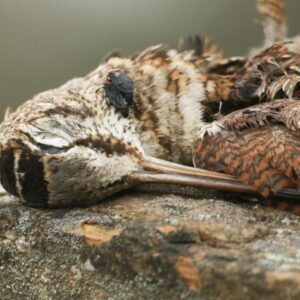Building Bird-Friendly Communities
Summertime means the return of the warm weather, blossoming flowers, buzzing bees and beach days. Just as important is the return of Canada’s migratory feathered-friends. Many would believe that the journey of birds from south to north would be the most dangerous part of their year. However, the danger of flying does not cease once they have returned, especially in urban areas.
According to statistics by FLAP Canada (Fatal Light Awareness Program) over 25 million birds die from crashing into low, medium and high-rise buildings annually. Unlike humans, birds are unable to distinguish windows from their environment at a distance and this proves fatal for many in flight birds. For many people, it is common to have witnessed a bird crashing into a window of their home or workplace.
This is what prompted Michael Mesure, and a base of like-minded volunteers, to begin FLAP. Mesure is the Executive Director of FLAP and is well aware of the death toll human made structures have on birds.
“On a one to one basis it doesn’t look so bad, one bird oh that’s tragic,” said Mesure, “but when you realize this is happening, and has happened, to everybody and start to do the math, it adds up.”
Mesure claims that anywhere from 1 to 10 birds per structure each year hit the glass. Despite architecture legislation in place to attempt to help migratory birds, more can be done from homeowners to build a more bird-safe community this summer. Mesure suggests the following methods to ensure birds of all kinds are safe when they are close to our homes.
- Feeder Location: One way to help reduce the risk of bird injury or death when it comes to windows is to move your feeders as close to your window as possible. By having the feeder closer to your window, birds will slow down as they approach the feeder and reduce the chance that crashing into a window.
- Bird Deterrent Markers: Rolls of reflective tape, placed at specific measurements on a window, hanging cords or ribbons on a window, and leaving screens visible all act as observable deterrents for birds to reduce the risk of them crashing.
- Keep Plants Away From Windows: If a bird can clearly see a plant on the other side of a window, it will want to try to eat said plant. Moving plants out of direct line of sight of birds is one-way to help prevent fatal bird crashes.
- Keep Your Windows Dirty: This trick could save you some work, though it is not as nice for your houses’ aesthetic. By not cleaning your windows as often, they will begin to become more visible to birds. The streaks on windows act as little spots of visibility to birds and may make the difference between a bird crashing and seeing a window.
To learn more about the steps you can take to prevent bird collisions and help create a bird-friendly community, please visit here.
While you are at it, check out the work FLAP Canada is doing in its mission to reduce bird mortality.



